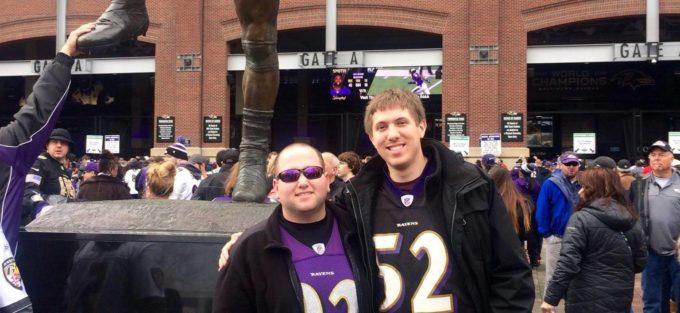
Get the latest articles delivered directly to your inbox!
Our Contributors
Class of 2022
Kyle Duke
Austin Foster
Charlotte Leblang
Ross Lordo
Class of 2021
Dory Askins
Connor Brunson
Keiko Cooley
Mason Jackson
Class of 2020
Megan Angermayer
Carrie Bailes
Leanne Brechtel
Hope Conrad
Alexis del Vecchio
Brantley Dick
Scott Farley
Irina Geiculescu
Alex Hartman
Zegilor Laney
Julia Moss
Josh Schammel
Raychel Simpson
Teodora Stoikov
Anna Tarasidis
Class of 2019
Michael Alexander
Caitlin Li
Ben Snyder
Class of 2018
Alyssa Adkins
Tee Griscom
Stephen Hudson
Eleasa Hulon
Hannah Kline
Andrew Lee
Noah Smith
Crystal Sosa
Jeremiah White
Jessica Williams
Class of 2017
Carly Atwood
Laura Cook
Ben DeMarco
Rachel Nelson
Megan Epperson
Rachel Heidt
Tori Seigler
Class of 2016
Shea Ray
Matt Eisenstat
Eric Fulmer
Geevan George
Maglin Halsey
Jennifer Reinovsky
Kyle Townsend
Join USCSOMG students on their journeys to becoming exceptional physician leaders.

Toe to Toe with a Linebacker
Indulge me for a second. Close your eyes and imagine you’re a college football player. You’re a running back, it’s game day, and you’re lined up in full gear on the 20-yard line behind your quarterback. The ball is snapped, you’re handed the football, and before you even make it past the line of scrimmage, you find yourself staring down the opposing team’s linebacker. You peer through your facemask at his 240 pound 6’ 2” all-muscle frame, which has been trained specifically for this moment: to turn you into next year’s fertilizer. Your cleats grip the turf, your muscles tighten, and your shoulders lower behind their pads as you brace for the impact…
Now, you’re flat on your back, wind knocked out, helmet knocked clean off, as you stare up at the beast of a man who put you there. He grins, his job done. Successfully.
Now, switch gears to me in a family medicine clinic, standing timidly before that same smiling linebacker. Only this time it’s a little different. The toll of time and tackles has worn on his strong frame. So much so, in fact, that he now walks permanently bent over at almost a 90⁰ angle from multiple spinal surgeries. For every tackle, every sack, and every snap, he had to trade cartilage, bone, and brain cells.
Not too long after retiring as a linebacker, he noticed he began having unrelenting joint pain: in his hands, in his shoulders, and particularly in his lower back. This pain only worsened with time as it was obvious that he had significant degenerative joint disease at an early age. As one might expect, his ability for physical activity greatly diminished, which precipitated his immense weight gain, and then came all the comorbidities one would suspect with obesity: diabetes, hypertension, hyperlipidemia, heart disease, etc.
For this particular visit, he’s being seen for his chronic leg wounds that are refractory to heal because of his diabetes. And on his mind, on top of all these other things, is his concern for severe dementia and cognitive decline, because “concussion protocol” used to be some smelling salts, a quick pat on the rear, and an order to “get back in there and smash someone.” He tells me there were multiple games he played every snap but can’t remember a single one of them.
And yet—in spite of all his ailments—never I have a met a man so pleasant to a stranger. He didn’t know me apart from my 10-second introduction. But as we talked for almost an hour about everything but the reason why he was there, he taught me that you truly cannot fathom someone’s story until you talk to them, and that, as a physician, it is imperative to leave undue judgment and bias at the door when encountering a patient for the first time. This man refocused my awareness that patients are just that: patients. They’re more than just a problem list in your chart. Engage them, talk with them. Who knows, you might just find yourself standing toe to toe with a linebacker.
Formerly from the Baltimore area, I graduated from Bob Jones University with a degree in pre-med. Having interacted through MedEx with the faculty and students, I knew the doctor USCSOMG will graduate was the doctor I wanted to become. If I’m not hitting the books, you can probably find me spending time with my better half or on the basketball court. It is an honor and a privilege to be a member of the class of 2018, and I’m excited to share my passion for emergency medicine and health education with my peers. “To whom much is given, much more shall be required.”
Copyright 2021 USC School of Medicine Greenville


